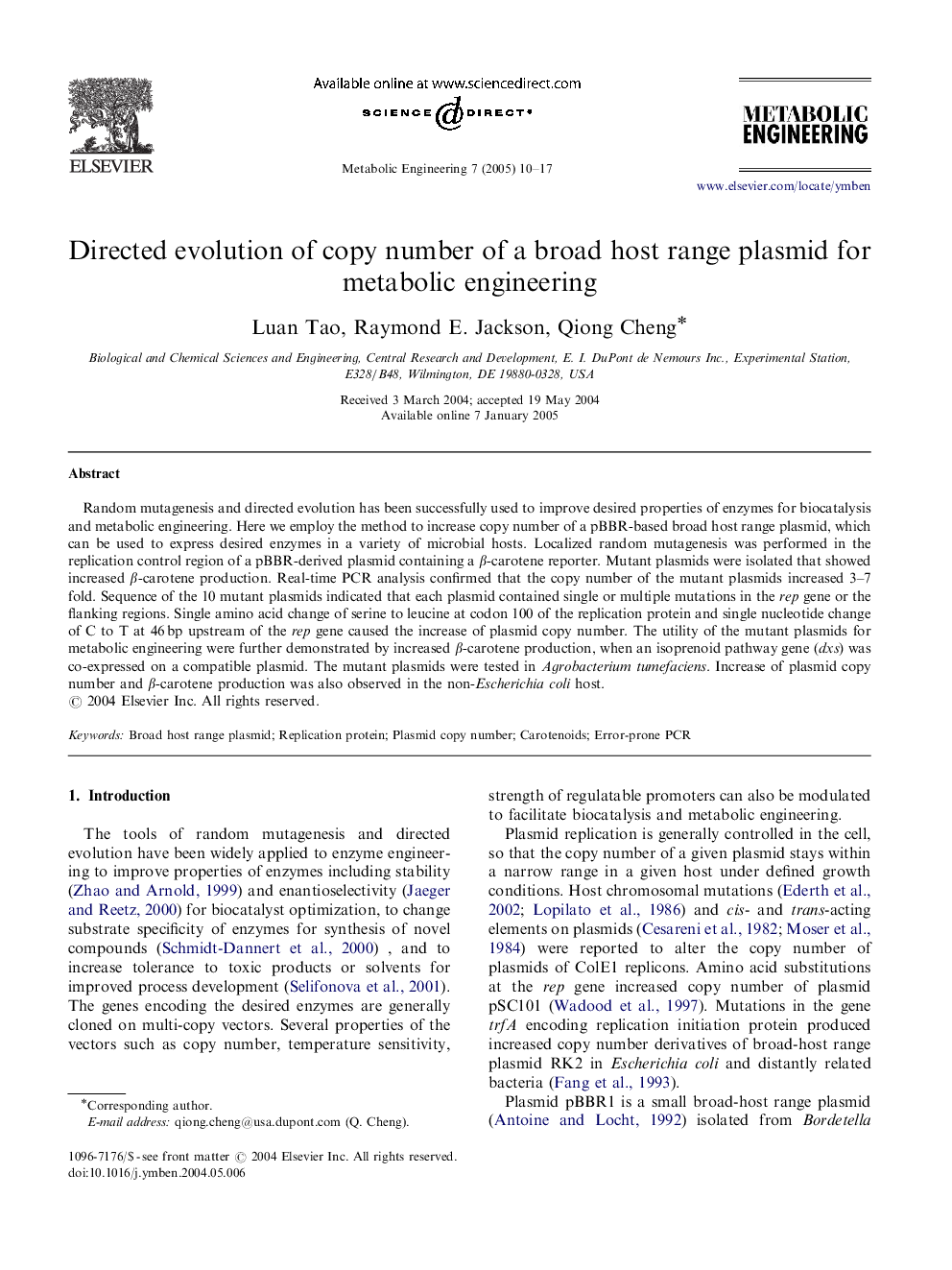| Article ID | Journal | Published Year | Pages | File Type |
|---|---|---|---|---|
| 10234680 | Metabolic Engineering | 2005 | 8 Pages |
Abstract
Random mutagenesis and directed evolution has been successfully used to improve desired properties of enzymes for biocatalysis and metabolic engineering. Here we employ the method to increase copy number of a pBBR-based broad host range plasmid, which can be used to express desired enzymes in a variety of microbial hosts. Localized random mutagenesis was performed in the replication control region of a pBBR-derived plasmid containing a β-carotene reporter. Mutant plasmids were isolated that showed increased β-carotene production. Real-time PCR analysis confirmed that the copy number of the mutant plasmids increased 3-7 fold. Sequence of the 10 mutant plasmids indicated that each plasmid contained single or multiple mutations in the rep gene or the flanking regions. Single amino acid change of serine to leucine at codon 100 of the replication protein and single nucleotide change of C to T at 46 bp upstream of the rep gene caused the increase of plasmid copy number. The utility of the mutant plasmids for metabolic engineering were further demonstrated by increased β-carotene production, when an isoprenoid pathway gene (dxs) was co-expressed on a compatible plasmid. The mutant plasmids were tested in Agrobacterium tumefaciens. Increase of plasmid copy number and β-carotene production was also observed in the non-Escherichia coli host.
Related Topics
Physical Sciences and Engineering
Chemical Engineering
Bioengineering
Authors
Luan Tao, Raymond E. Jackson, Qiong Cheng,
